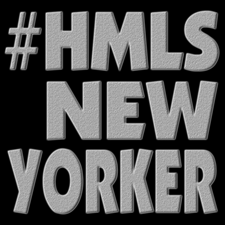“For 246 years our uncompensated labor launched wealthy institutions and private corporate fortunes in America such as Brown University and Fleet Bank, both founded by the Brown brothers, who got their start in American business building slave ships and investing in the slave trade. Cotton made everyone associated with it wealthy- the plantation owners, the […]
Read the rest of this entry »On This Day In 1898: The Wilmington Insurrection
The Wilmington race riot of 1898 is also historically known as the Wilmington Massacre of 1898, and the Wilmington Coup d’etat of 1898. This incident is reportedly the only instance of and attempted coup d’etat in the history of the United States. On November 10, 1898, members of the Democratic Party attempted to overthrow elected […]
Read the rest of this entry »Black History Fact Of The Day: How NYC’s Wall Street Got Its Name
In March 1653, Peter Stuyvesant, the director of the slave-trading Dutch West India Company and the Director-General of New Netherland, now known as New York, ordered slaves to build blockades to serve as protective barriers for the area of lower Manhattan. Stuyvesant reportedly demanded that the log-made barricade be “12 feet long, 18 inches in […]
Read the rest of this entry »African Slaves Built The Rice Industry
“South Carolina’s slave-plantation owners had known nothing about how to grow and irrigate rice. That knowledge was brought to the low country by Africans stolen from the Sierra Leone by the Royal African company of England. As the slaves produced the rice that made the plantation owners rich, their glistening backs bore the branded acronymn […]
Read the rest of this entry »African Slavery & The West Indies
“The West Indies was one of the last places on earth where enslaved Africans wanted to find themselves. Its system of bondage was especially brutal, and American planters found it a convenient dumping ground for troublesome slaves. Shipping a slave to the West Indies was like sentencing him to death. George Washington as one of […]
Read the rest of this entry »Black History Fact Of The Day: How Enslaved Africans Built Brooklyn
I came across a 2012 Huffington Post article written by Alan Singer that explores how enslaved Africans built up Brooklyn. The article also discusses a Brooklyn-located African burial ground. Here’s an excerpt from the article: “At the time of the American Revolution about a third of the population of Kings County were enslaved Africans, but […]
Read the rest of this entry »The University Of Mississippi Built On The Graves Of Slaves
Over 2,000 graves of slaves were found underneath the University of Mississippi. Tweet
Read the rest of this entry »Slaves Used In Ritual Sacrifices
“Antera Duke was a leading elk trader at Old Calabar in the Bight of Biafra during the late eighteenth century. He lived at Duke Town, about twenty miles from the Calabar River estuary. Over time he prospered and became a member of the local Ekpe (Leopard) Society, which wielded enormous power in the slave trade […]
Read the rest of this entry »Elsie Law’s Dose Of The Law: Slave Trade Act of 1788
According to Wikipedia, “The Slave Trade Act 1788, also known as Dolben’s Act, was an Act of Parliament which placed limitations of the number of people that British slave ships could transport. Dutch ships were not subject to restrictions on the number of slaves they could carry.” The fact that the slave trade was “legally” […]
Read the rest of this entry »

